Allergens in the home can make daily life uncomfortable, whether they come from dust, pollen, pet dander, or mold. We can improve comfort by reducing allergens and creating a cleaner, healthier space. Small changes in how we clean, filter air, and manage moisture can make a noticeable difference.
When we understand where allergens come from, we can take clear steps to control them. From adjusting our HVAC systems to managing humidity, each choice we make helps lower exposure and improve air quality.
By focusing on practical strategies, we can create a home that feels more comfortable and supports better well-being. Simple actions, when done consistently, add up to a healthier environment for all of us.
Understanding Common Home Allergens
Many of the particles that trigger allergies indoors come from everyday sources we may overlook. By learning where these allergens come from and how they affect us, we can take steps to reduce their impact on our comfort and health.
Types of Indoor Allergens
Indoor allergens often come from living organisms or natural particles. Dust mites are one of the most common. They live in bedding, carpets, and upholstered furniture. Their waste particles can trigger sneezing, itchy eyes, and other allergy symptoms.
Pet dander is another major source. Even animals that do not shed much hair still release tiny skin flakes that can cause allergic reactions. These flakes are lightweight and can remain in the air for long periods.
Mold spores grow in damp areas like bathrooms, basements, and kitchens. When released into the air, they can irritate the nose, throat, and lungs. People with asthma may find mold especially bothersome.
Seasonal pollen can also enter our homes through open windows or on clothing and shoes. Once inside, it can settle on surfaces and mix with other indoor allergens.
| Allergen | Common Locations | Possible Symptoms |
|---|---|---|
| Dust mites | Bedding, carpets, furniture | Sneezing, runny nose, itchy eyes |
| Pet dander | Upholstery, air, clothing | Congestion, coughing, skin rash |
| Mold spores | Bathrooms, basements | Wheezing, sore throat, headaches |
| Pollen | Windows, floors, fabrics | Sneezing, watery eyes, fatigue |
How Allergens Affect Home Comfort
Allergens affect how we feel in our living spaces. When we breathe in dust, pet dander, or mold spores, our immune system reacts as if fighting off a threat. This can lead to sneezing, coughing, or congestion.
These symptoms make it harder to relax or sleep well. For people with asthma, allergens may trigger wheezing or shortness of breath, reducing comfort and safety in the home.
Even mild allergy symptoms, such as itchy eyes or a runny nose, can disrupt daily routines. Over time, constant exposure may also increase sensitivity, making the home feel less restful.
A clean and controlled environment reduces these reactions. By limiting allergen buildup, we create a healthier space where we can breathe more easily.
Sources of Allergens in the Home
Many allergens come from common household items. Dust collects on shelves, curtains, and electronics, carrying dust mite particles and other irritants. Regular cleaning helps reduce buildup.
Pets shed both hair and dander. Even short-haired pets contribute to allergens that stick to clothing, furniture, and air filters. Grooming and vacuuming can help manage the spread.
Moisture is another source. Damp conditions allow mold to grow on walls, ceilings, and carpets. Small leaks or poor ventilation can make this problem worse.
Outdoor pollen enters through doors, windows, and air vents. Once inside, it mixes with indoor allergens and increases overall exposure.
By identifying these sources, we can target cleaning and prevention strategies more effectively. This helps us lower allergen levels and maintain a more comfortable home.
Strategies for Reducing Allergens and Enhancing Comfort

We can lower allergens in our homes by focusing on cleaning habits, choosing the right materials, and controlling sources of dander and dust. Simple changes in how we maintain our spaces make a big difference in reducing allergy symptoms and supporting healthy living.
Routine Cleaning and Allergen-Proofing
Regular cleaning keeps allergens from building up in the air and on surfaces. We should vacuum floors and carpets at least once or twice a week using a vacuum with a HEPA filter. These filters trap fine particles like dust and pollen that standard vacuums can miss.
Dusting with a damp cloth helps prevent particles from spreading back into the air. Dry dusting often moves allergens around instead of removing them. For curtains and blinds, washable curtains are the better choice since we can clean them often without extra effort.
We can also use allergen-proof covers on mattresses and pillows. These covers block dust mites from settling where we sleep. Keeping windows closed during high pollen seasons and using air purifiers with HEPA filters further lowers indoor triggers.
Managing Bedding, Carpets, and Furniture
Bedding collects dust mites, skin flakes, and other allergens. Washing sheets, pillowcases, and blankets weekly in hot water removes these irritants. Using pillow covers and mattress protectors adds another layer of defense.
Carpets hold allergens deep in their fibers. If possible, we should replace wall-to-wall carpeting with hard flooring. If removal is not an option, frequent vacuuming with a HEPA filter vacuum is essential. Steam cleaning carpets a few times a year also helps reduce buildup.
Furniture with fabric upholstery can trap dust and dander. Choosing leather, vinyl, or tightly woven fabrics makes cleaning easier. For existing upholstered furniture, vacuuming with proper attachments and occasional professional cleaning keeps allergens under control.
Pet Allergen Control
Pets bring comfort but also spread pet dander that triggers allergy symptoms. We can reduce dander by bathing and brushing pets regularly. Keeping them out of bedrooms and off bedding further limits exposure where we spend the most time.
Vacuuming floors, carpets, and furniture often is key since dander sticks to soft surfaces. Using washable pet bedding and cleaning it weekly in hot water also cuts down on allergens.
Air purifiers with HEPA filters help capture dander that lingers in the air. Combining these steps allows us to enjoy pets while maintaining a healthier home environment.
Improving Indoor Air Quality with HVAC and Filtration
We can lower airborne allergens and improve indoor air quality by focusing on air filters, HVAC upkeep, and targeted devices that capture or neutralize particles. Clean airflow and proper ventilation keep dust, bacteria, and other irritants from building up inside our homes.
Upgrading Air Filtration Systems
Air filters play a major role in reducing allergens. Standard fiberglass filters only trap large particles, but HEPA filters capture up to 99.97% of particles as small as 0.3 microns, including dust, pollen, and pet dander. Using HEPA filters in our HVAC system or as stand-alone filtration systems can make a big difference.
We should choose filters based on the MERV rating (Minimum Efficiency Reporting Value). A higher MERV rating means finer filtration, but we need to make sure our HVAC system can handle the airflow resistance. Many residential systems work best with filters rated between MERV 8 and MERV 13.
It also matters how often we replace filters. Dirty filters reduce airflow and allow allergens to circulate. A simple schedule, such as checking filters every month and replacing them every 2-3 months, helps maintain efficiency.
HVAC Maintenance and Duct Cleaning
Our HVAC system moves air through the entire house, so regular HVAC maintenance is essential. When filters clog or ductwork collects dust, allergens spread more easily. A neglected system can also strain the blower motor and reduce energy efficiency.
Routine tasks include:
- Replacing HVAC filters on time
- Inspecting ductwork for leaks or buildup
- Scheduling professional service once or twice a year
Duct cleaning is not always necessary, but it becomes important if we notice visible dust blowing from vents, mold growth, or rodent activity. Cleaning ductwork in these cases can reduce allergen circulation and improve airflow.
Keeping vents clear of furniture and vacuuming registers also helps reduce buildup. Small steps like these keep our system running smoothly while limiting airborne particles.
Air Purifiers and UV Light Systems
Standalone air purifiers provide extra protection in bedrooms, living rooms, or areas where pets spend time. Models with HEPA filters capture fine particles that HVAC filters may miss. Some units also include activated carbon filters to reduce odors and smoke.
A UV light system can be added to HVAC equipment to target bacteria, mold spores, and some viruses. These lights work inside the air handler or near the evaporator coil, helping prevent microbial growth in damp areas.
Air purifiers and UV systems do not replace HVAC filters, but they add another layer of protection. Using them together can reduce allergens and improve indoor air quality, especially for people with asthma or seasonal allergies.
Ventilation and Exhaust Fans
Good ventilation keeps indoor air from becoming stale and reduces the buildup of allergens and moisture. Without proper airflow, dust and other particles stay trapped inside. Bringing in fresh outdoor air helps dilute these pollutants.
Exhaust fans in kitchens and bathrooms remove moisture, odors, and particles at the source. Running these fans while cooking or showering prevents mold growth and reduces humidity, which can make allergens worse.
We should also check that fans vent outdoors, not into attics or crawl spaces, since that only shifts the problem. Opening windows when weather allows adds another simple way to refresh indoor air. Together, these steps keep our home’s air cleaner and easier to breathe.
Humidity and Moisture Control for Allergen Prevention
Managing indoor humidity helps us limit allergens that thrive in damp or overly dry environments. By keeping moisture balanced, we reduce the risk of mold, mildew, and dust mites that can trigger allergic reactions.
Dehumidifiers and Humidifiers
We can use dehumidifiers to lower excess moisture in areas like basements, bathrooms, and kitchens. High humidity often encourages dust mites and mold growth, so keeping levels between 30% and 50% is ideal. A portable dehumidifier works well for single rooms, while whole-house units connect to HVAC systems for broader coverage.
Humidifiers are useful when indoor air becomes too dry, especially in winter. Dry air can irritate the nose and throat, making allergy symptoms worse. By adding moisture, humidifiers help us maintain comfort, but we must clean them regularly to prevent bacteria or mold from developing inside the tank.
A quick comparison:
| Device | Purpose | Best Use Case |
|---|---|---|
| Dehumidifier | Removes excess moisture | Damp rooms, basements |
| Humidifier | Adds moisture to dry air | Winter heating season |
Using the right device depends on our local climate, home design, and seasonal needs. Monitoring humidity with a simple hygrometer helps us adjust settings accurately.
Preventing Mold and Mildew Growth
Mold and mildew thrive in damp, poorly ventilated areas. We can prevent mold growth by fixing leaks quickly, running exhaust fans in bathrooms and kitchens, and keeping indoor humidity within the healthy range. Even small amounts of standing water, like in a shower corner, can encourage mildew to form.
Regular cleaning plays a key role. Wiping down tile grout, washing shower curtains, and drying wet surfaces reduces mold spores. In closets or storage areas, we can use moisture absorbers or silica gel packs to keep air dry.
Key practices include:
- Repairing plumbing leaks right away
- Using dehumidifiers in basements or crawl spaces
- Running air conditioners to lower indoor humidity
- Keeping gutters clear to prevent water intrusion
By combining good ventilation, proper humidity control, and routine cleaning, we create an environment that makes it harder for mold and mildew to grow.




